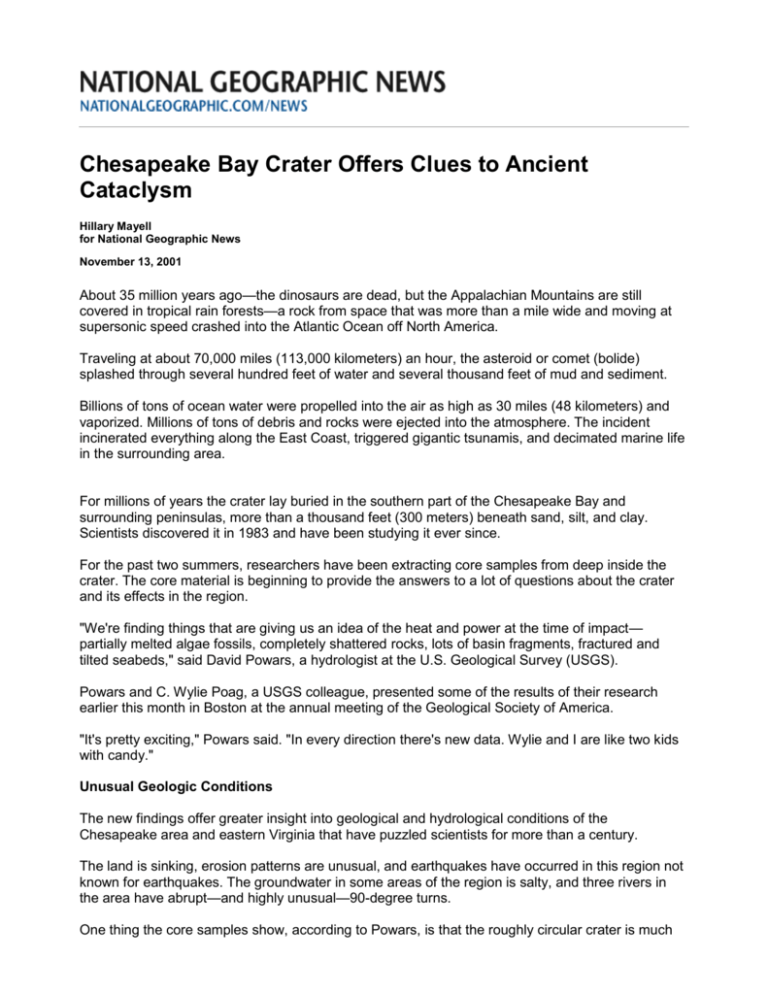
Chesapeake Bay Crater Offers Clues to Ancient
Cataclysm
Hillary Mayell
for National Geographic News
November 13, 2001
About 35 million years ago—the dinosaurs are dead, but the Appalachian Mountains are still
covered in tropical rain forests—a rock from space that was more than a mile wide and moving at
supersonic speed crashed into the Atlantic Ocean off North America.
Traveling at about 70,000 miles (113,000 kilometers) an hour, the asteroid or comet (bolide)
splashed through several hundred feet of water and several thousand feet of mud and sediment.
Billions of tons of ocean water were propelled into the air as high as 30 miles (48 kilometers) and
vaporized. Millions of tons of debris and rocks were ejected into the atmosphere. The incident
incinerated everything along the East Coast, triggered gigantic tsunamis, and decimated marine life
in the surrounding area.
For millions of years the crater lay buried in the southern part of the Chesapeake Bay and
surrounding peninsulas, more than a thousand feet (300 meters) beneath sand, silt, and clay.
Scientists discovered it in 1983 and have been studying it ever since.
For the past two summers, researchers have been extracting core samples from deep inside the
crater. The core material is beginning to provide the answers to a lot of questions about the crater
and its effects in the region.
"We're finding things that are giving us an idea of the heat and power at the time of impact—
partially melted algae fossils, completely shattered rocks, lots of basin fragments, fractured and
tilted seabeds," said David Powars, a hydrologist at the U.S. Geological Survey (USGS).
Powars and C. Wylie Poag, a USGS colleague, presented some of the results of their research
earlier this month in Boston at the annual meeting of the Geological Society of America.
"It's pretty exciting," Powars said. "In every direction there's new data. Wylie and I are like two kids
with candy."
Unusual Geologic Conditions
The new findings offer greater insight into geological and hydrological conditions of the
Chesapeake area and eastern Virginia that have puzzled scientists for more than a century.
The land is sinking, erosion patterns are unusual, and earthquakes have occurred in this region not
known for earthquakes. The groundwater in some areas of the region is salty, and three rivers in
the area have abrupt—and highly unusual—90-degree turns.
One thing the core samples show, according to Powars, is that the roughly circular crater is much
bigger and deeper than originally thought.
When it hit, the asteroid or comet "fractured the crystalline bedrock below to at least a depth of 7
miles (11 kilometers) and a width of 85 miles (137 kilometers). This was a big hit," he said.
Earlier estimates had suggested the crater was about a mile deep (1.3 kilometers) and 53 miles (85
kilometers) wide.
The impact of the bolide disturbed the normal layering of sediment, rocks, and aquifers, and water
from many of the wells in the region is salty or brackish.
Utility companies in eastern Virginia are funding some of Powars' work because the findings have a
direct bearing on the search for fresh groundwater needed to supply growing populations in the
region.
Linked With Extinction?
Scientists have long suspected that the heat from the impact incinerated every living thing within
hundreds of miles. The core drilling has revealed a zone of silt that is devoid of signs of indigenous
life, lending credence to that hypothesis, said Poag.
Poag believes the impact could have influenced an extinction that occurred about 33 million years
ago.
The early Oligocene extinction dramatically affected land mammals. Forest dwellers declined as
forested habitat became less abundant, while hoofed animals flourished as a result of increasing
temperate grasslands. A number of predators also became extinct at this time, mainly because of
changes in vegetation.
The asteroid or comet that struck the area that later became the Chesapeake Bay may be evidence
of a 2 million-year-long comet shower that scientists think may have occurred between 36 and 34
million years ago.
An even bigger crater in Popigai, northern Siberia, was created at about the same time. Scientists
also have found traces of helium 3, an isotope associated with extraterrestrial objects, in sediment
layers in Massignano, Italy, and other places dating to 35 million years ago.
"Global paleo-temperatures during the early Eocene show the world was getting cooler," said Poag.
"Around 35 million years ago, at the end of the Eocene, there was a warm pulse, and for a short
period of time the Earth warmed. Then beginning at around 34 million years ago the Earth cooled
very rapidly. At 33.4 million years ago there was a major extinction event."
The aftermath of the bolide collision, Poag said, would have been prolonged darkness and acid rain
caused by the fallout of rocks, dust, and particles that were blasted into the atmosphere, along with
the residual effects of raging wildfires.
These conditions, he suggests, would cause the abrupt cooling of Earth, leading to the extinction
that eventually occurred.
The National Geographic Society provided funding for this research in the past.
© 1996-2008 National Geographic Society. All rights reserved.
Asteroids Rock
Could a giant space rock slam into Earth in 30 years?
PLANET POUNDING
Space rocks have pounded the planets for years. All one has to do is look at Mercury or Mars to see the scars left by
these crashes. Even our moon is scarred. What about our planet? Surely Earth is safe.
Not really. Take Australia, for instance. There you'll find a group of 13 craters. Huge space rocks gouged them out
about 5,000 years ago.
Craters are also found in Argentina in South America. There you'll find large teardrop holes in the ground. These
formed when a 200-meter (600-foot) space rock broke up as it skipped across the landscape.
Signs of this cosmic beating are also found closer to home. In Arizona, you can find a 1.6-kilometer-wide (1-milewide) crater. This is Meteor Crater. A speeding space rock blasted it out about 5,000 years ago.
These aren't the only impact craters. More than 200 have been found. That may not seem like many, but wind and
water can erode, or wear away, old craters. They don't last long.
Craters show that space rocks have slammed into our planet. That raises a big question. Could it happen again? To
answer that, we have to know where space rocks come from.
ON THE ROCKS
Most space rocks start off in the asteroid belt. It is an area between Mars and Jupiter. Millions of asteroids orbit our
sun there. Most scientists think asteroids are leftover material from the formation of our solar system.
The asteroids found there range in size. Most are pebbles. Some are large stones. Other asteroids are 1,000
kilometers (600 miles) across. If all the asteroids were gathered together, though, they would form an object less
than the size of our moon.
The NEAR spacecraft crashed into one of these asteroids on February 12, 2001. It's called Eros. It's one of the largest
asteroids. As NEAR zoomed in on the asteroid, it took lots of photos. They showed that the asteroid has long grooves.
It is also pocked with craters. One of the largest is nearly six kilometers (four miles) across. Unfortunately, NEAR went
dead as it crashed into Eros. Still, it showed for the first time what an asteroid looks like close-up.
The asteroids in the asteroid belt do not pose much of a threat to Earth. They stay there for the most part. Some,
however, drift out of the asteroid belt. They may come closer to Earth. These asteroids are more threatening.
CLOSER TO HOME
Some asteroids come much closer to Earth. These are called Near-Earth Objects. Take an asteroid named Apophis, for
example. This 320-meter-wide (1,050-feet-wide) asteroid was discovered just a couple of years ago. Yet some
scientists are already worried about it.
Apophis passes near Earth about every 16 years. Its next visit should be in 2013. That shouldn't cause a problem. It
will pass by us harmlessly. This space rock will pass Earth again on April 13, 2029.
This time it will be much closer�only 35,000 kilometers (22,000 miles) away. It will be so close that Earth's gravity
may change its orbit. Now that could cause a big problem.
TOO CLOSE FOR COMFORT?
Instead of passing by Earth, this asteroid could slam into our planet in April 2036. The most likely spot is off the coast
of Mexico.
To learn more, NASA plans on sending a spacecraft to the asteroid. The spacecraft would put a homing beacon on it.
That would help scientists accurately track the asteroid.
Scientists have already sent one spacecraft to a Near-Earth Object. Last September, a Japanese spacecraft visited an
asteroid slightly larger than Apophis. The space rock is made of boulders. It looks more like a pile of rubble than a
solid chunk of rock. Scientists think it formed when two space rocks slammed into each other. Could Apophis also be a
pile of space rubble?
By first charting Apophis's path through space and then going there, scientists can decide how to deal with the
asteroid. It will most likely never slam into our planet.
If it is ever on a collision course, scientists can take care of the asteroid. They could send a spacecraft to it. The
spacecraft would act like a tractor and pull the asteroid away from Earth. So don't worry too much. Even if an asteroid
comes close, the sky isn't falling.
Article by Lesley J. MacDonald. Top-of-page photo by � Don Dixon /cosmographica.com. "Asteroids Rock" appears on
pages 18-23 of our September 2006 issue.


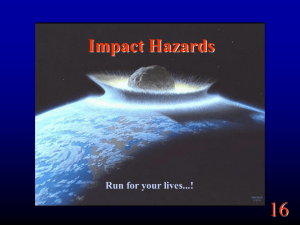


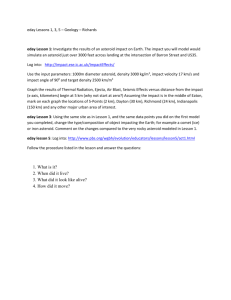
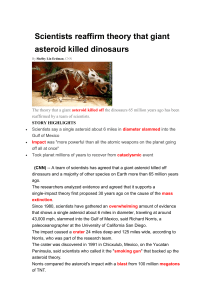
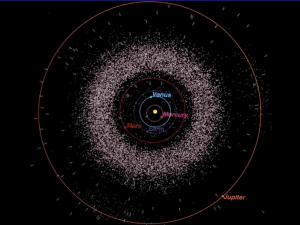
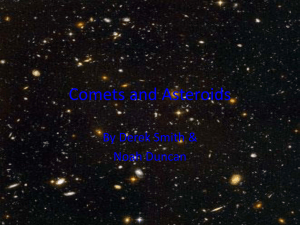
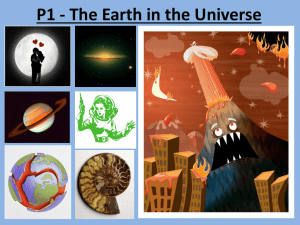
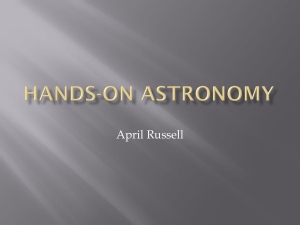

![haz conf abstract [drf] - Southwest Research Institute](http://s3.studylib.net/store/data/007447390_1-b1454dd229e999bbb1b9d01b750155d1-300x300.png)